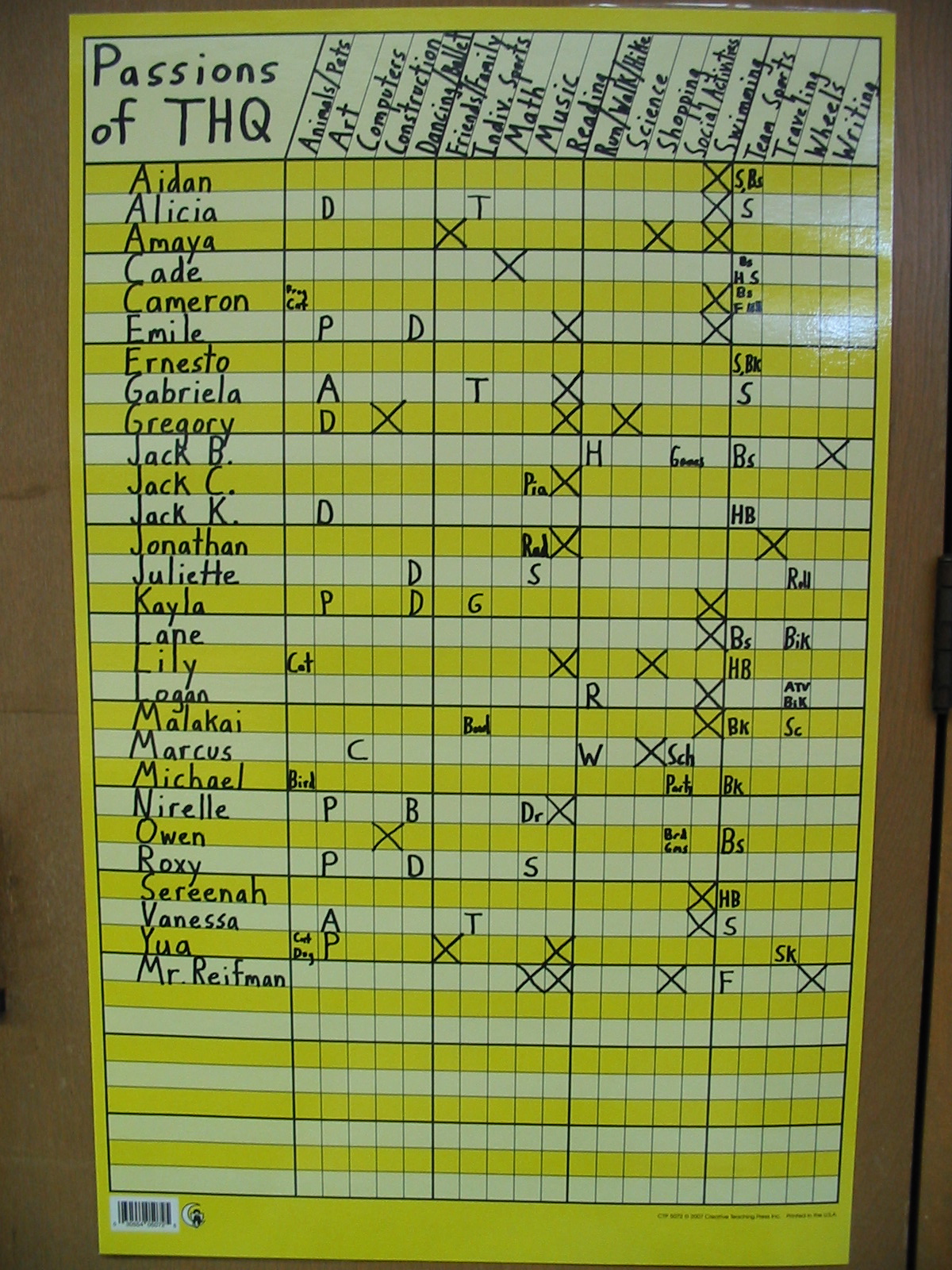First, a tremendous amount of group bonding and teambuilding occur when students learn what their classmates are passionate about. In fact, many friendships form or strengthen because of the shared interests that children discover. Sometimes kids have been in the same class with others for many years and are only now discovering their shared love of certain topics or activities. In short, Passion Surveys help teachers get to know their students better and help kids get to know one another.
Second, when students have the opportunity to make curricular choices, the passions provide a terrific starting point. For example, if I am stuck trying to figure out what to write about in Writing Workshop, I can think about my passions and choose one to spark an idea. If I need to write an information book and I love the Los Angeles Dodgers (which I do), I can write my book about the Dodgers. Motivation, interest, and productivity increase substantially when I am able to choose my topic, and they increase even more when I pick a topic about which I am passionate.
Finally, there's another subtle side benefit that results from the Passion Survey. The simple fact that, as a class, we are thinking and talking and writing about our passions sends the message that it is cool to be passionate about things. Students who may not yet have found their passions will become more encouraged to look, especially when they see their classmates excited by their own passions. In addition, people tend to be happiest when they are pursuing their passions, and if your students have regular opportunities to incorporate their passions into their schoolwork, your classroom will naturally become a happier, more productive place.
Note: The letters you see on the chart stand for specific items that fall within the larger category of which they are a part. For example, in the Art category, "D" stands for drawing, "P" stands for painting, and "A" stands for overall art.







